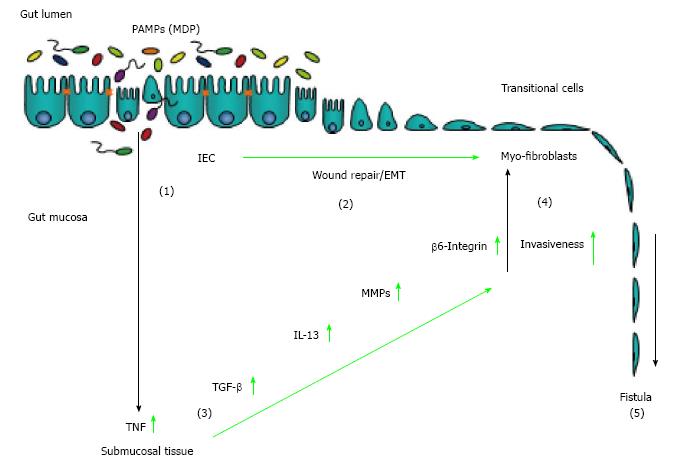Copyright
©2014 Baishideng Publishing Group Inc.
World J Gastrointest Pathophysiol. Aug 15, 2014; 5(3): 205-212
Published online Aug 15, 2014. doi: 10.4291/wjgp.v5.i3.205
Published online Aug 15, 2014. doi: 10.4291/wjgp.v5.i3.205
Figure 1 Pathogenesis of Crohn’s disease-associated fistulae.
An epithelial barrier defect favours the invasion of pathogen-associated pattern (PAMPs) into the gut mucosa (1). On the one hand, for wound healing purposes, intestinal epithelial cells undergo epithelial-to-mesenchymal transition (2). On the other hand, presence of PAMPs induced an inflammatory reaction resulting in increased secretion of TNF (3). TNF is able to induce secretion of TGF as well as to induce EMT and expression of molecules associated with cell invasiveness, such as 6-integrin. TGF-induced IL-13 and elevated activation of matrix remodelling MMPs critically contribute to invasive cell growth (4). Finally, EMT, MMP over-activation and elevated expression of invasive molecules contribute to the development of fistulae (5).
- Citation: Scharl M, Rogler G. Pathophysiology of fistula formation in Crohn's disease. World J Gastrointest Pathophysiol 2014; 5(3): 205-212
- URL: https://www.wjgnet.com/2150-5330/full/v5/i3/205.htm
- DOI: https://dx.doi.org/10.4291/wjgp.v5.i3.205









